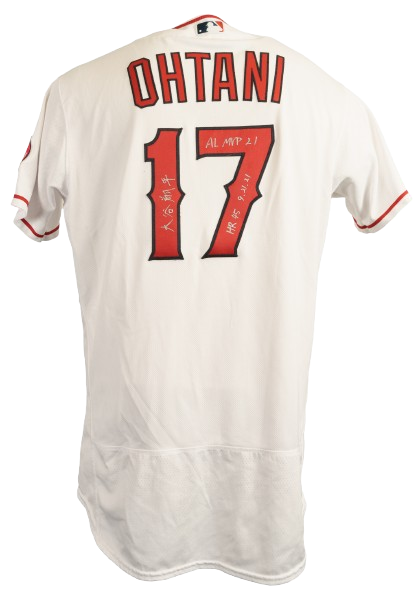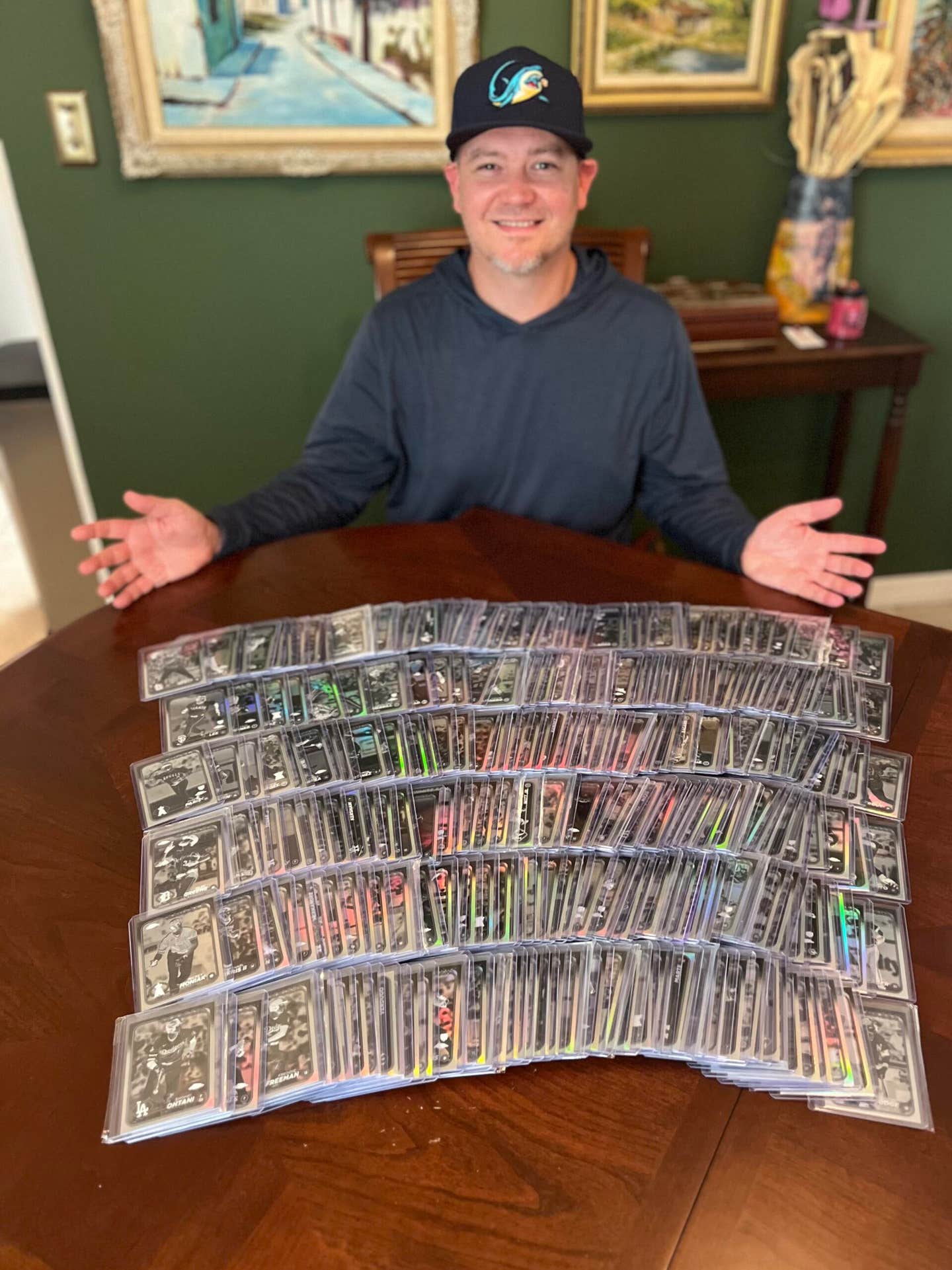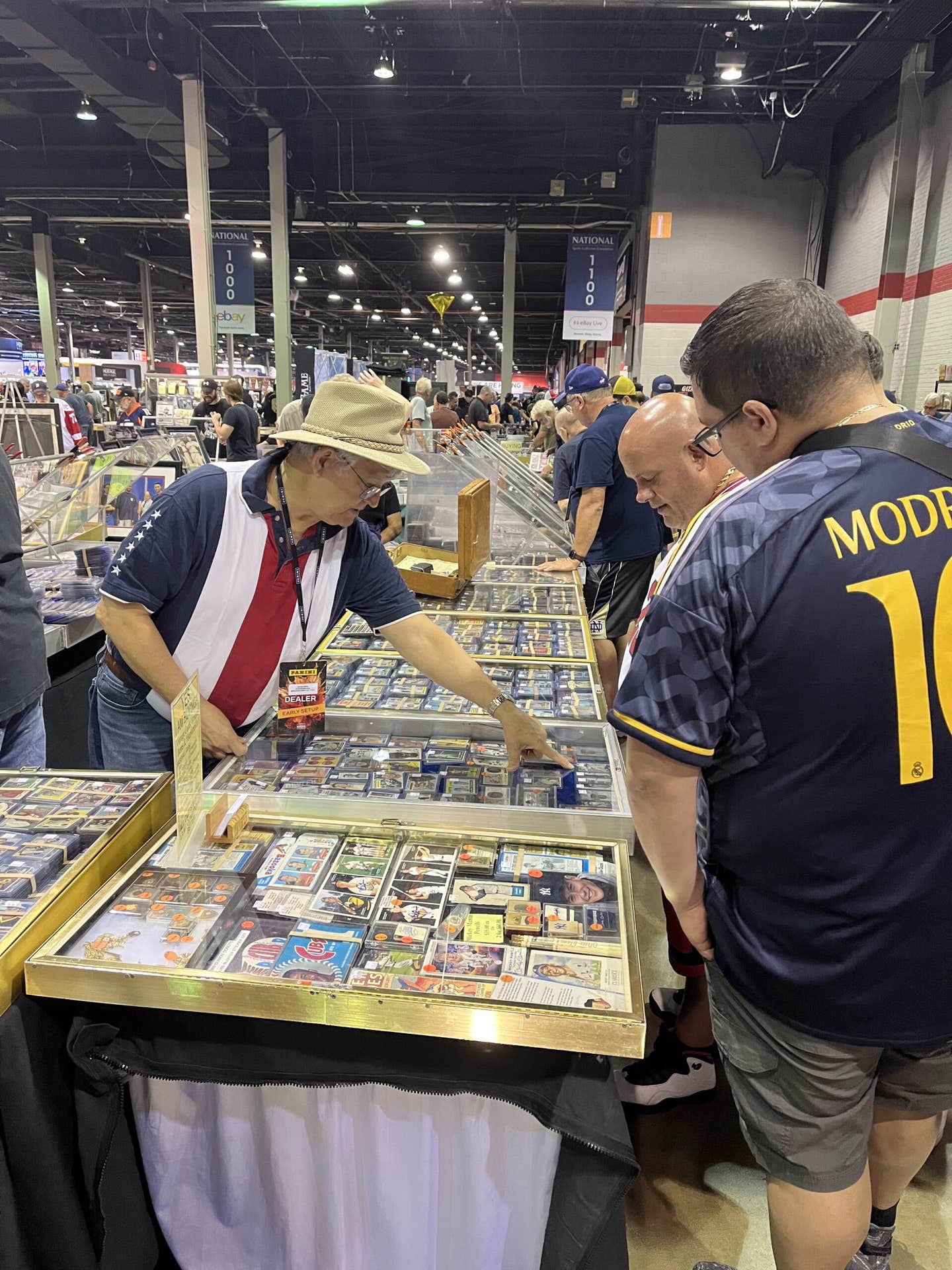News
Stand by thee: 1964 Stand-Ups still impress
What sports diehard hasn’t, in times of great duress and desperation, wanted to punch out the player that ruined his favorite team’s title hopes? In 1964, Topps gave collectors that opportunity with their unique Stand-Ups release.
The 1964 Topps Stand-Ups set, the first die-cut cards since Topps’ 1951 All-Stars, features 77 players with clearly stated directions on each card: “Punch out and bend back on perforated line.”
Whether young collectors did so with glee in ’64 is hard to tell, but the fact that many were punched-out leaves today’s collector with very few high-grade specimens. Despite this fact, or perhaps because of it, the Stand-Ups set has taken root and is currently one of the hottest selling vintage sets in the hobby.
Richard Budnick, owner of America’s Pastime, has seen collectors converge on this set with increased fervor in recent years.
“The Stand-Ups are an oddball brand that many seasoned collectors pursue because they are not the average run-of-the-mill cards,” he said. “You won’t find these in every dealer’s inventory.”
Part of the drawback to building the set is that interest in the individual players depicted is high – 19 Hall of Famers grace the set. Also, an astounding 22 of the 77 cards were short-printed, including icons Don Drysdale, Eddie Mathews, Willie McCovey, Warren Spahn and Billy Williams.
Budnick gets a lot of requests for short-printed Stand-Ups, but often the requests are for guys like Jesse Gonder and Hal Woodeshick.
“Believe it or not, common SPs in clean condition are the cards many collectors ask about,” he said. “Probably because these are still relatively cheap in comparison to the star cards.”
One of those star short-prints is Carl Yastrzemski, a must-have for Stand-Ups and BoSox collectors. Though the Stand-Ups have blank-backs, Yaz is considered the omega card in the set because his name comes last alphabetically. And while alphabetizing is easy, the only thing more difficult than asking a baseball novice to spell Yaz’s last name would be to find his Stand-Ups card in Near Mint or better condition. The Yaz books for $450, a figure nearly double the value of his 1960 Topps rookie card. But it sells for much more, if you can find one, when graded Near Mint or better. A PSA 7 typically sells for $600.
Of course, Yaz isn’t the only star attraction in a set peas-in-a-pod tight with superstars. In fact, there’s no need for Topps to issue retro cards of guys they missed. All the stars are here: Hank Aaron, Ernie Banks, Robert Clemente, Al Kaline, Harmon Killebrew, Sandy Koufax, Mickey Mantle, Willie Mays and Brooks and Frank Robinson. Though not a short-print, Budnick says Mantle’s Stand-Up is tough to find because both collectors of The Mick and Stand-Ups chasers vie for the card in any condition. Mantle books as the most valuable card in the set at $500, while both Clemente and Mays list at $220. Though some of these cards are cost prohibitive, the set has caught on among more than just oddball collectors.
“It’s a large enough set to be a challenge for collectors to complete,” Budnick said, “yet small enough to be attainable in finishing.”
Money isn’t the only factor hobbyists consider when pursuing Stand-Ups. Collector Steven DeGregorio admires the cards for their aesthetic appeal.
“I love the full body shots showing the whole uniforms, with some of those uniforms showing rips and dirt and grass stains.”
Topps oddball collector David Hornish noted, “I like the similarity of all the cards. They are the perfect period piece.”
Color-blinding
Each Stand-Up is a sea of ghastly green and yellow. After punching out the player, the yellow, or upper half, was meant to be folded over, leaving the green bottom to replicate grass for each player to stand upon, like their own personal exhibit for a child’s dresser or shelf. Whether perforated or not, each player appears to leap off the cardboard.
“This set, by far, stands alone in regard to originality,” said the Connecticut-based DeGregorio. “The pictures almost look painted, not photographed.”
Radical coloring makes the cards highly collectible, but also makes them tough to find in high grade. “They are quite fragile,” Budnick said. “And due to the colors, these cards show off the slightest wear, making them tough to find in clean condition. Most of my customers are quite picky when it comes to purchasing Stand-Ups.”
Naturally, these cards don’t “stand up” real well to the scrutiny of card-grading experts. PSA population reports attest to the low number of high-grade Stand-Ups available. Receiving an 8 is difficult – most of the individual cards have received the snowman score fewer than 50 times. Collectors hoping to land a 9 anytime soon might want to call in Ethan Hunt of Mission Impossible lore. At the time of this writing, only 10 Mantles, eight Aarons, four Mays, two Banks and one McCovey have scored 9s.
The Stand-Ups, sold one per penny pack, were susceptible to wax stains. Aside from stains, novice collectors shun the set because of the card-backs. “The blank backs are a negative, as many collectors are not used to seeing a blank-backed card,” Budnick said. “People like to see a card with stats and pictures on the back.”
Keep your eye on the unopened packs
For Stand-Ups collectors, the “Find of the Century” occurred in June of this year when an eBay seller offered a complete unopened box (120 packs) of Stand-Ups packs. The seller claimed to have found the box at a yard sale. “In all the years of collecting these great cards,” DeGregorio said, “I’ve never even seen a single unopened pack, so this was a real rarity.”
The winning bidder, confident despite the seller’s grammatical blunders, shelled out more than $25,000 for the item. Soon thereafter, all 120 packs were certified as unopened and graded by GAI, with 75 of the 120 packs grading out at Mint 9 or better. Mastro Auctions then sold the graded lot for just under $30,000.
Although only the condition of a pack is graded with no consideration to the individual cards inside, unopened Stand-Ups packs have semi-translucent wrappers, so any buyer knows up front which player he’ll receive in each pack, kind of like a one-card cello pack. The Mastro winner, for example, knew the unopened packs constituted one whole set, with numerous duplicates and triplicates mixed in, including three packs with Clemente.
In October of this year, 50 of those same graded packs showed up on eBay. With minimum bids ranging from $300 for commons to $3,000 for the GAI 8 pack that contained Mantle, collectors’ curiosity was certainly piqued. Undoubtedly, most of the sales went to rather well-to-do fans of each particular player. Several of the unopened packs closed for the minimum, including Mantle, GAI 8 Sandy Koufax ($900), GAI 8.5 Brooks Robinson ($500) and GAI 8 Ernie Banks ($500).
The unopened packs that saw the most bidding action included a GAI 9 Yastrzemski (sold for $750), GAI 9 Aaron ($810) and GAI 9.5 Jack Baldschun ($677). The Baldschun, according to DeGregorio, is the toughest of the short-prints to find.
Still, more than half of the graded packs went unsold, including a number with stars showing. Even though countless fans of this set would have loved adding any of these unopened treasures to their collection, few were willing to roll the dice at the most expensive craps table they’d seen.
No matter, for Stand-Ups collectors, the game is still afoot.








